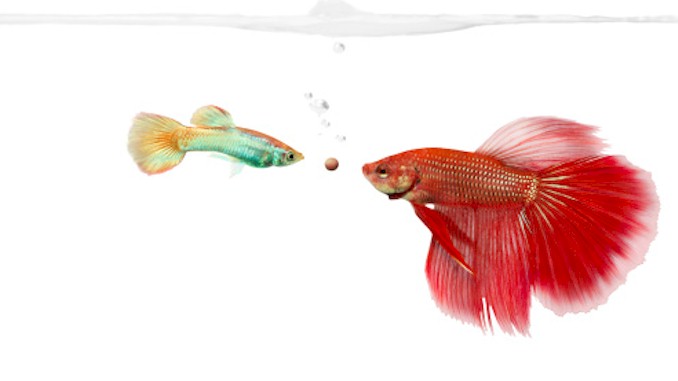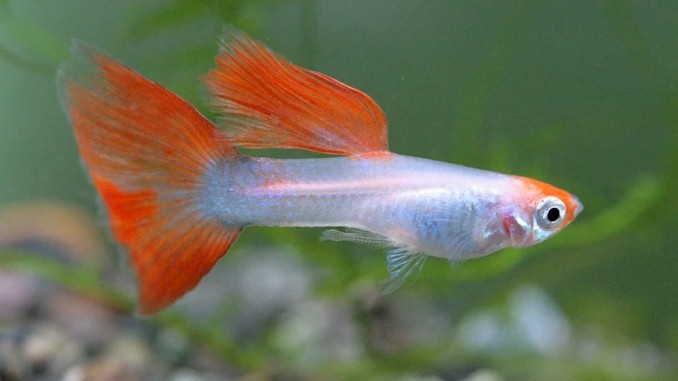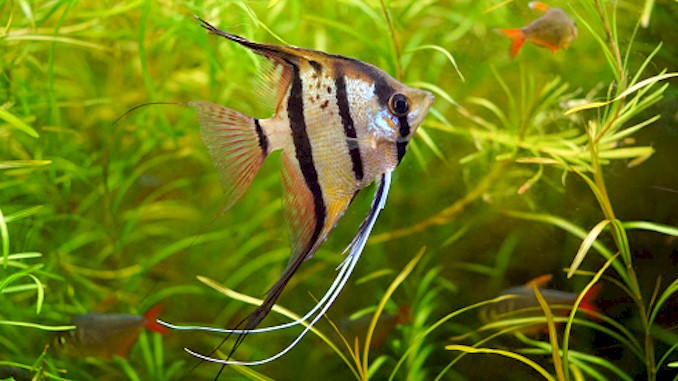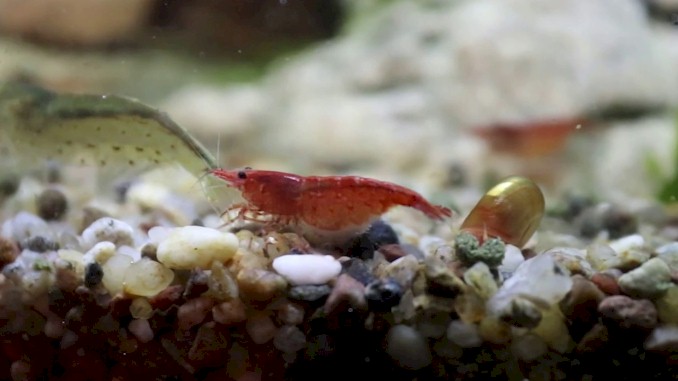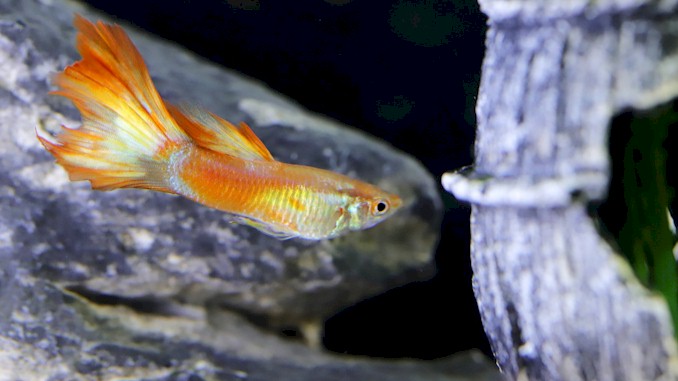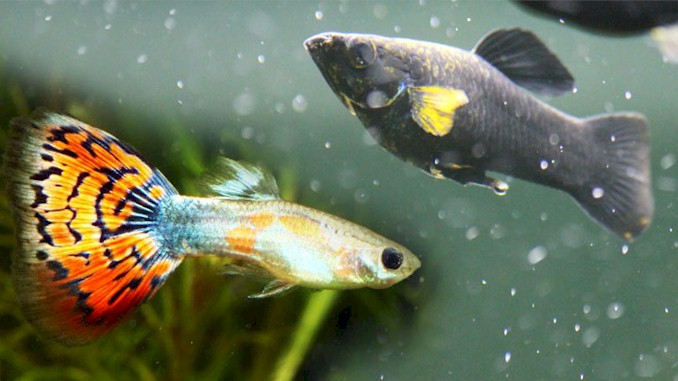Can Guppies and Bettas Live Together – A Complete Guide
Guppies and Bettas are both beautiful and popular fish. You may be wondering if you can keep these to fish together. After all, they’d make a masterpiece for your tank. If so, you’ve come to the right place.
Guppies and bettas can only sometimes live together in the same aquarium. Bettas are aggressive and territorial fish that may see guppies as prey or competition, and their finnage could trigger the betta’s aggression. Keeping them together could lead to injuries, stress, and death. However, some aquarists have successfully kept them in the same tank but with certain conditions.
If you’re still interested in keeping guppies and bettas together, there is more to learn about this topic. In the following paragraphs, I will delve deeper into the specific conditions that make it possible for these fish to coexist peacefully, such as tank size, water parameters, and compatible fish species. Additionally, I will provide tips on how to introduce guppies and bettas to each other and how to monitor their behavior in the tank. By the end of this post, you will have a comprehensive understanding of whether guppies and bettas can live together and how to do it safely. So, keep reading to learn more.
Why Guppies and Bettas Can’t Usually Live Together?
Keeping guppies and bettas together in the same aquarium can be tempting for fish enthusiasts. Still, the reality is that these two species are not natural companions and may not coexist well together. While guppies are peaceful and relatively easy to care for, bettas are known for their aggressive and territorial behavior, making them challenging to manage in a community tank.
Bettas are known to flare their fins and become aggressive towards other fish, especially those with similar appearances or long fins. They are also known to be territorial, defending their space against other fish that encroach on their territory. This behavior makes them a poor choice for a community tank, where they may see other fish, including guppies, as competition or prey.
Moreover, guppies have long, flowing tails that may trigger the betta’s aggression, as they resemble other male bettas. Bettas may also mistake guppies for food, as they are smaller in size and slower swimmers. When kept together, bettas may nip at the guppies’ fins, causing injury and stress. In some cases, bettas may even attack and kill guppies, making it clear that these two fish species should not coexist in the same tank.
However, not all bettas are aggressive or territorial, and some may tolerate the presence of other fish, including guppies, in their tanks. This depends on several factors, such as the betta’s personality, tank size, and other environmental conditions. In the next subheading, we will discuss the specific conditions that make it possible for guppies and bettas to coexist peacefully in the same aquarium.
How Can Guppies and Bettas Coexist?
Although guppies and bettas don’t usually get along, it is possible to keep them together in the same tank under specific conditions. Here are the critical factors to consider when keeping guppies and bettas together:
Tank Size
If you’re considering keeping guppies and bettas together, it’s crucial to provide a spacious environment that accommodates all of them. The number of guppies you can house with your betta largely depends on the size of your tank.
Ideally, you should have at least one gallon of water for every fish in the tank. However, because you’re housing both a betta and guppies, it’s recommended to have extra space. I suggest a tank that is 10 gallons or bigger, which can house one betta and three guppies. For every additional five gallons, you can add three more guppies.
Having enough space is vital because it ensures that your fish have ample room to swim and avoid each other. When it comes to guppies, it’s best to have one male for every two females. However, due to the likelihood of aggressive behavior, it’s advisable to stick to female guppies to minimize the risk of attacks.
Provide Enough Space For Both Guppies and Bettas
Guppies are known for their active swimming behavior, frequently gliding through the middle of the tank and occasionally making their way to the top. While this can be visually appealing, it may also lead to territorial issues if your guppies venture into your Betta’s area.
However, once your Betta has staked out their claim to a specific part of the tank, your guppies are less likely to intrude (unless there’s a tasty treat on offer!). It’s important to note that Betta fish are known for their territorial nature and may become aggressive towards other fish that enter their domain.
As a responsible fish owner, it’s important to monitor your aquatic pets closely and ensure that they are not engaging in aggressive or harmful behavior towards each other. By providing ample space, hiding places, and appropriate feeding routines, you can help to minimize territorial conflicts and create a peaceful and harmonious underwater community in your tank.
Water Parameters
When it comes to keeping different types of fish together, it’s crucial to understand if they can survive in the same water environment. Take for instance guppies and bettas – two fish that originate from different parts of the world. Guppies hail from South America and prefer freshwater lakes and rivers, whereas bettas are native to Southeast Asia and can be found in streams and rice paddies.
At first glance, it may seem impossible for these two fish to coexist in the same tank. However, it is actually feasible. Both guppies and bettas can survive in similar water conditions, with a few key differences in their preferred pH levels and temperature ranges.
Guppies thrive in water with a pH range of 6.8 to 7.8 and a temperature range of 74 to 82°F. Meanwhile, bettas prefer a pH level of 7 and a temperature range of 78 to 80°F. Despite these distinctions, both guppies and bettas can flourish together in the same aquatic environment.
Admittedly, it can be a challenge to understand the unique behaviors, tank requirements, and diets of multiple fish species. However, with the right knowledge and preparation, it’s possible to create a harmonious and thriving aquatic community in your home.
Choosing the Right Betta Breed
Betta fish are a unique and fascinating species, known for their semi-aggressive nature. However, it’s important to remember that not all Betta breeds are created equal when it comes to temperament. Some Betta fish breeds are naturally more aggressive, while others have a more peaceful demeanor.
If you’re considering adding guppies to your Betta fish tank, it’s crucial to select the right breed of Betta to ensure a harmonious aquatic environment. Opting for a breed that is passive and less aggressive is the safest choice. Two great options to consider are the Delta Betta fish and Halfmoon Betta fish.
It’s a common misconception that all Betta fish breeds are compatible with guppies. However, to avoid potential conflicts and ensure a happy and thriving community, it’s best to limit your selection to these two breeds. This way, your guppies and Betta fish can coexist peacefully and happily in the same tank, creating a visually stunning and dynamic underwater world for you to enjoy.
The Gender of Your Betta and Guppies
When it comes to creating a harmonious aquarium, the gender of your fish plays a critical role. As you may know, male Bettas are notoriously aggressive. While females are generally less aggressive, they can still display hostility towards other fish, and may even be faster than their male counterparts.
If you’re thinking of adding male guppies to your tank, it’s important to avoid pairing them with a male Betta. Male guppies’ flowing fins and bright colors can trigger aggression in male Bettas, leading to potential injury or death of your guppies.
On the other hand, pairing a female guppy with a male Betta is possible, but it’s crucial to choose a less colorful female guppy. Otherwise, the Betta’s aggression may still be triggered.
Pairing male guppies with a female Betta is also not advisable, as male guppies may mistake the Betta for a female guppy and attempt to mate, leading to aggression and potentially fatal attacks.
The best combination for Betta and guppy cohabitation is female Betta and female guppies. While female Bettas can still be aggressive, they are less likely to attack female guppies, making it a safer choice. However, keep an eye out for any bullying behavior, as Betta fish may occasionally mistake a female guppy as a rival and try to establish dominance.
By selecting your fish carefully and monitoring their behavior, you can create a peaceful and thriving aquatic environment for your Betta and guppy companions.
Do Guppies Nip Fins
When keeping guppies with bettas, it’s not just the possibility of your betta attacking them that you need to consider, but also the fact that guppies are known to be fin nippers. This means you should be mindful of the potential for your guppies to attack your betta as well.
In particular, male guppies can be quite territorial, and it’s not uncommon for them to nip the fins of other fish, especially those with long, flowing fins. On the other hand, female guppies are less likely to display aggression or territorial behavior, and the chances of them nipping or fighting are relatively low.
It’s important to keep an eye on your guppies and betta to ensure they are coexisting peacefully. If you notice any signs of aggression or fin nipping, it’s best to separate the fish to prevent any harm.
Overall, while guppies may have a tendency to nip fins, with careful monitoring and the right tank set up, you can create a peaceful and harmonious environment for your fish.
What Do Guppies and Bettas Eat
To keep your betta in top health, it’s important to provide them with a diverse diet that includes more than just fish flakes and pellets. In fact, they also require meat in their diet to stay healthy and thrive.
Guppies share similar dietary needs to bettas, and as such, can benefit from a similar range of foods. So, if you plan on feeding your betta mosquito larvae, daphnia, or bloodworms, your guppies can enjoy these treats too.
In addition to these foods, guppies are known to graze on algae that grows naturally in the tank. This makes them excellent tank cleaners, as they help to keep the tank free of excess algae and maintain a healthy balance in the environment.
By providing your betta and guppies with a varied and nutritious diet, you can help to keep them healthy and happy in their aquarium home. So, don’t forget to offer them a variety of foods, including meat and algae, to ensure they receive all the nutrients they need to thrive.
What To Do if Guppies are Eating Betta food
As previously mentioned, guppies and bettas can enjoy many of the same types of food. However, while meat is an essential part of a betta’s diet, it is optional for guppies.
If you notice your guppies gobbling up all of your betta’s live food, there are a few strategies you can try to ensure that your betta gets the nutrition they need.
One approach is to feed your betta and guppies separately. To do this, place food at opposite ends of the tank and slowly drip-feed it to each group. Once your betta has had their fill, you can release the remainder of the food for the guppies.
Alternatively, you can use a net to keep your guppies away from your betta during feeding time. This ensures that your betta has the opportunity to eat their food without competition.
By implementing these strategies, you can ensure that both your betta and guppies receive the proper nutrition they need to thrive in your aquarium.
How to Introduce Guppies and Bettas and Monitor Their Behavior
When introducing guppies and bettas, it’s essential to take things slow and monitor their behavior closely. Here are the steps to follow when introducing guppies and bettas and ensuring they get along:
Step 1: Set Up the Tank Properly
Before introducing guppies and bettas, make sure the tank is set up correctly with ample hiding places, live plants, and the right water parameters. The tank should also be free of any other fish species, which may trigger aggression or territorial disputes.
Step 2: Add the Guppies First
When adding guppies and bettas to the tank, it’s best to add the guppies first. This allows the guppies to establish their territory and get comfortable with the tank’s environment before adding the bettas. Guppies are generally more peaceful than bettas and are less likely to trigger aggression.
Step 3: Add the Bettas
After a few days of adding the guppies, you can introduce the bettas to the tank. When adding the bettas, make sure to do it during the daytime when they are most active. Slowly acclimate the bettas to the tank’s environment by floating the container they came in the tank for about 15 minutes before releasing them.
Step 4: Observe Their Behavior
Once the bettas are in the tank, observe their behavior closely. It’s normal for the bettas to be curious and investigate the guppies, but if they start to display aggressive behavior, such as flaring their fins or nipping at the guppies, remove the bettas immediately. Repeat the process of adding and observing the bettas until they coexist peacefully with the guppies.
Step 5: Maintain the Tank Regularly
Regular maintenance of the tank is crucial when keeping guppies and bettas together. Make sure to perform regular water changes, clean the tank’s filter, and maintain the ideal water parameters. A clean and well-maintained tank reduces the risk of disease and aggression.
Conclusion: Is It Worth Keeping Guppies and Bettas Together?
After reading this complete guide, you may wonder whether it’s worth keeping guppies and bettas together. The answer is, it depends. While guppies and bettas can coexist peacefully, it requires proper preparation, observation, and patience. Here are some pros and cons to consider before deciding whether to keep guppies and bettas together.
Pros of Keeping Guppies and Bettas Together
- Variety in Your Aquarium – Keeping guppies and bettas together can add variety to your aquarium. Both fish species come in various colors and patterns, making your aquarium more visually appealing.
- Easy to Care For – Both guppies and bettas are relatively easy to care for and don’t require extensive maintenance. Keeping them together in the same tank can simplify the care routine.
- Cost-Effective – Keeping guppies and bettas together can be cost-effective, as you won’t need to invest in two separate tanks and equipment.
Cons of Keeping Guppies and Bettas Together
- Aggression – As mentioned earlier, guppies and bettas can display aggression towards each other, leading to territorial disputes and stress for both fish.
- Compatibility – Not all guppies and bettas are compatible with each other. Some bettas are more aggressive than others, and some guppies may be too flashy or colorful, which can trigger the betta’s aggression.
- Risk of Disease – Keeping two different fish species together can increase the risk of disease transmission. Guppies are susceptible to certain diseases that bettas may carry, making them more prone to illnesses.
Conclusion
In conclusion, keeping guppies and bettas together can be a rewarding experience if done correctly. It’s essential to take the necessary steps to prepare the tank, introduce the fish, and monitor their behavior closely. However, if you’re not prepared to deal with the potential risks and challenges that come with keeping these two fish species together, it’s best to keep them separate. As with any aquarium, proper research and preparation are key to creating a healthy and thriving environment for your fish.

